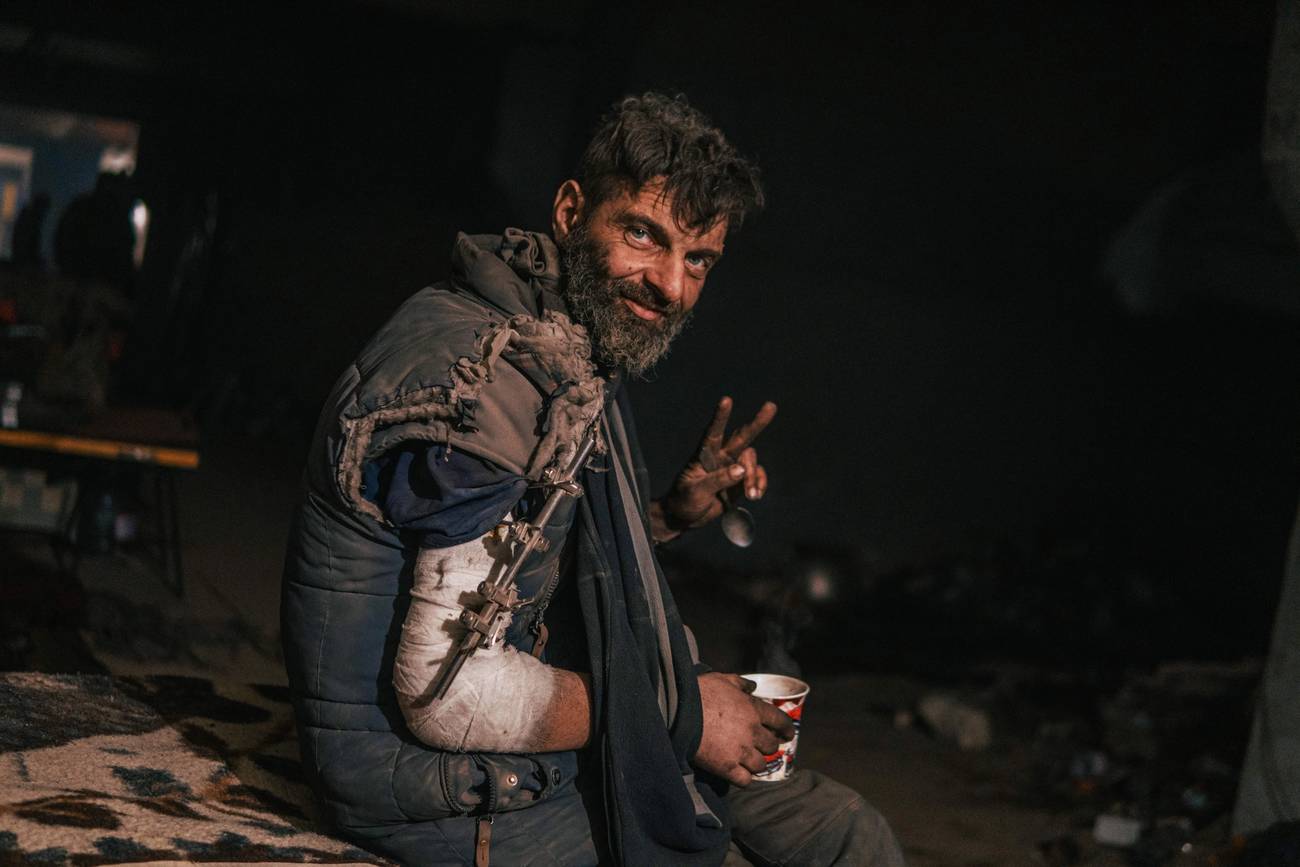 Steven Seagal na meczu Francja-Chorwacja w Moskwie w finale mistrzostw świata w piłce nożnej w 2018 roku (KIRILL KUDRYAVTSEV / AFP / EAST NEWS)
Steven Seagal na meczu Francja-Chorwacja w Moskwie w finale mistrzostw świata w piłce nożnej w 2018 roku (KIRILL KUDRYAVTSEV / AFP / EAST NEWS)
 Steven Seagal jest kacapem
Steven Seagal jest kacapem
Paweł Smoleński
Kacapy. Ukraińscy żołnierze swoich przeciwników określają niemal wyłącznie tym słowem.
[webmaster – “kacap -Rosjanin” ja tak mowielm przez cale moje dzienistwo w Polsce ]
W moim dzieciństwie tym pojęciem posługiwał się każdy uczniak. Słowo „kacap” odmieniane było po podwórkach i szkolnych korytarzach. Niosło w sobie zawartość pejoratywną i lekceważącą. Jeśli ktoś marnie się ubierał, mówiło się, że ma ciuchy kacapskie. Jak ktoś kogoś chciał sponiewierać, rzucał: ty kacapska mordo, czym narażał się od kacapskiej mordy na rewanż, najczęściej pięściami.
Wszyscy wiedzieli, że kacap to rusek. Nie szło o Rosjan, ale o ludzi z Sowietów, bo ta obelga łączyła się przede wszystkim z ustrojem Kraju Rad, a nie z narodowością. Gdyby jakiś propagator przyjaźni polsko-radzieckiej postał wtedy choć kwadrans pod trzepakiem, pojąłby, że jego wysiłki w kraju nad Wisłą skazane są na porażkę. Chyba że byłby po kacapsku tępy. Bo że kacap był tępy, tłumaczyć nie trzeba.
Kacap z Turcji przez Ukrainę
Gdy Polska pokonała w hokeja w 1976 r. w Katowicach jedyny raz w historii ZSRR, to radość z batów sprawionych kacapom była wszechobecna i międzypokoleniowa. Lecz wraz z dorastaniem to słowo gdzieś się ulatniało, stawało się demode i chyba nie zmieniła tego gorączka pierwszej „Solidarności”. Dopiero za demokracji dowiedziałem się, że kacap ciągle funkcjonował, geograficznie przypisany głównie do Podlasia. Mówiono tak o polskich Białorusinach, co jest po prostu chamskie. Podobnie jak określanie tym mianem wszystkich, którzy mieli nieszczęście urodzić się w Sowieckim Sojuzie. W tym Ukraińców.
Tymczasem – powtarzają słowniki – słowo „kacap” wywodzi się z ukraińskiego. Tak twierdzi np. prof. Maria Brzezina z Uniwersytetu Jagiellońskiego. Ma być zbitką dwóch wyrazów, z których pierwszy znaczy „jak”, a drugi „cap”. „Jak-cap”, bowiem w oczach Kozaków rosyjscy bojarzy wyglądali niczym kozły, a to ze względu na kozie brody, które rozkazał im zgolić car Piotr I, ufając, że przynajmniej wyglądem doszlusują do Europy.
Ukraińscy językoznawcy odnaleźli źródłosłów kacapa w językach tureckich. Oznacza „rzeźnika” (podobnie jak w języku arabskim) i brzmi podobnie, bo „kassab”. Z tureckiego „kacap” trafił do języków Europy Środkowo-Wschodniej i określał człowieka złego, dzierżymordę, oprawcę. Niekiedy, jak w przypadku jidysz lub polskiej gwary ze Lwowa, kacap to cymbał i głupek, ale też krętacz oraz hochsztapler.
Steven Seagal jest kacapem
Po napaści Moskali na Ukrainę kacap zmartwychwstał, bo tylko kacap mógł wpaść na taki pomysł. I trudno się dziwić zmartwychwstaniu, bowiem słuchając kremlowskich oficjeli i ich przydupasów artystycznej, sportowej lub dziennikarskiej proweniencji, cisną się na usta wyrazy o wiele gorsze. A co powiedzieć, kiedy ogląda się zdjęcia z Buczy, Charkowa czy Mariupola i ukraińskich cywili mordowanych metodami kacapskimi, bo sowiecka Armia Czerwona podczas II wojny światowej często zachowywała się nie lepiej.
Choć pojęcie „kacap”, a wersji gender „kacapka” (takich też nie mało) powstało po to, by obrazić Rosjan en bloc, jest – rzecz jasna – zbyt dużą generalizacją.
Bez wątpienia kacapy to kremlowska kamaryla, burżuje – kleptokraci, ich totumfaccy i propagandziści, generałowie, którym Ukraina powoli, acz konsekwentnie wybija zęby, a nawet ten młodziutki mariak-gieroj, znany wraz z kolegami ze zbrodni w Buczy.
Niestety – najprawdziwsza kacapia to też znaczna część tzw. prostego ludu.
Ale kacapem nie jest przecież były mer Jekaterynburga, którego reżim posadził za krytykowanie wojny. Albo starsza pani z Petersburga, samotnie wychodząca na ulice z własnoręcznie zrobionymi plakatami. Pewien raper, który podczas koncertu przyklęknął, by złożyć hołd walczącej Ukrainie. Aleksiej Nawalny, garść politycznych emigrantów z Rosji, kilku pisarzy i intelektualistów, działacze zdelegalizowanego Memoriału, dzielni manifestanci z rosyjskich miast i ten anonimowy człowiek, którego zdjęcie obiegło cały świat: trzyma w dłoniach kartkę z napisem, że przeprasza za kacapską Rosję. Przed Rosjanami-nie-kacapami czapka z głowy.
Jest też kacap różnonarodowy. To np. obalony przez Majdan Godności Wiktor Janukowycz, niestety z Ukrainy. Jeszcze nieobalony Aleksander Łukaszenka z Białorusi i Steven Seagal z Hollywoodu. U nas jak kacap mówi Janusz Korwin-Mikke, kiedy bezczelnie i bezwstydnie głosi, że masakra Mariupola to ukraińska ustawka. Z drugiej strony należy podziwiać profetyczne talenty anonimowych ukraińskich autorów tego pojęcia. Wszak ówże Korwin ma nawet capią brodę, czyż nie?
Paweł Smoleński – pisarz, publicysta, reporter „Gazety Wyborczej”
Zawartość publikowanych artykułów i materiałów nie reprezentuje poglądów ani opinii Reunion’68,
ani też webmastera Blogu Reunion’68, chyba ze jest to wyraźnie zaznaczone.
Twoje uwagi, linki, własne artykuły lub wiadomości prześlij na adres:
webmaster@reunion68.com



